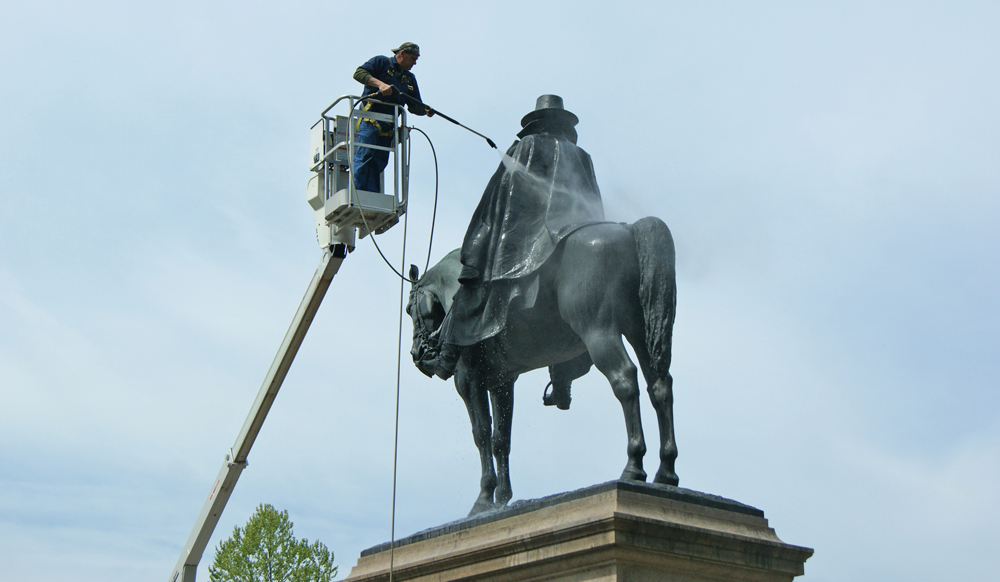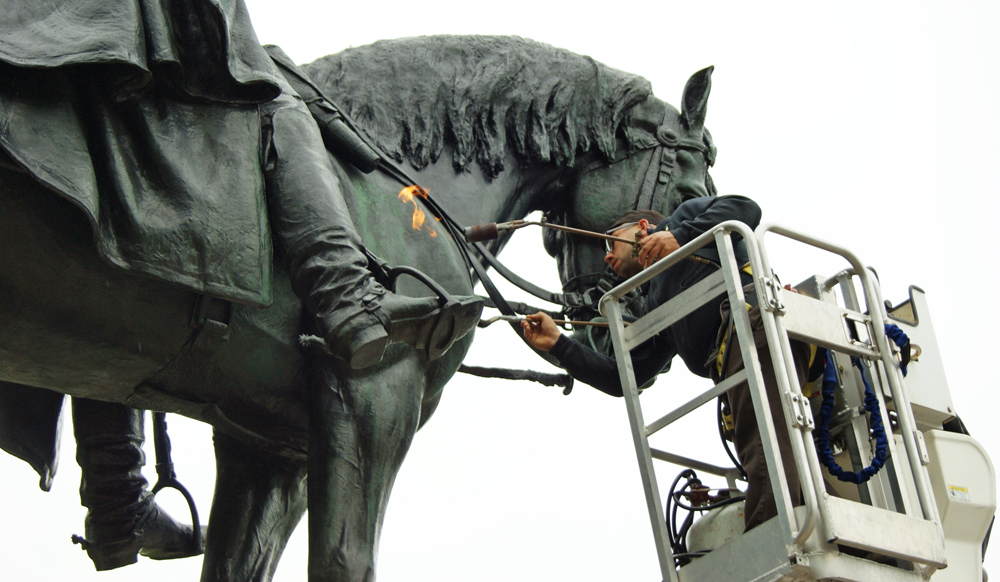This past May, the bronze General Ulysses S. Grant (1897) along Philadelphia’s Kelly Drive received a dramatic steam treatment as part of the Association for Public Art’s (aPA) landmark Conservation Maintenance program. The aPA provides annual conservation treatment for over 30 outdoor sculptures in Philadelphia each spring, including special projects as needed. Click here for a list of artworks that received treatment this year.
Stripping away the old layers is necessary, as airborne particulates collect in the wax over time and become entrapped.
For Grant, our conservation team completely removed the sculpture’s many layers of protective wax coating with hot pressure water/steam. A new thin wax coating was then applied to the surface and buffed to help highlight the sculpture’s details. Stripping away the old layers is necessary, as airborne particulates collect in the wax over time and become entrapped. The build-up causes the sculpture to look darker, and makes its details harder to read because the surface becomes more homogenous.
This work was conducted by conservator Steve Tatti, who has been the consulting conservator to the aPA’s conservation program since its inception, and Advanced Power Washing and Cleaning, LLC.

Why the wax coating?
Because of prevailing wind patterns, Pennsylvania receives some of the highest amounts of acidic precipitation in the nation. Applying a wax coating helps to protect bronze sculpture from acid rain, as well as airborne chemical pollutants. Acid rain forms when sulfur dioxide and nitrogen oxide, primarily from coal-burning and electric power plants, mix with moisture in the atmosphere, and airborne pollutants, in the form of minute and microscopic particles, are caused primarily by car emissions. Acid rain corrodes the surface of bronze sculpture – increasing the danger of structural failure and giving the works a streaky appearance – and particle deposits can cause pits in the bronze.
>>Learn more about the aPA’s Conservation Maintenance program.

About the Artwork
A bronze monument in Philadelphia’s Fairmount Park, General Ulysses S. Grant (1897) depicts Ulysses S. Grant, the Civil War General and 18th President of the United States, surveying a battlefield. Four days following Grant’s death in 1885, the Fairmount Park Art Association (now the Association for Public Art) formed a committee to commission the memorial. Seven artists were invited to submit sketch models. Accomplished sculptor Daniel Chester French was selected, and requested that former student and horse modeler Edward C. Potter collaborate with him. Potter is responsible for the horse and French created the rider. French, best known for his sculpture Abraham Lincoln for the Lincoln Memorial in Washington, D.C., also created Law, Prosperity and Power in West Fairmount Park.